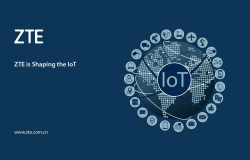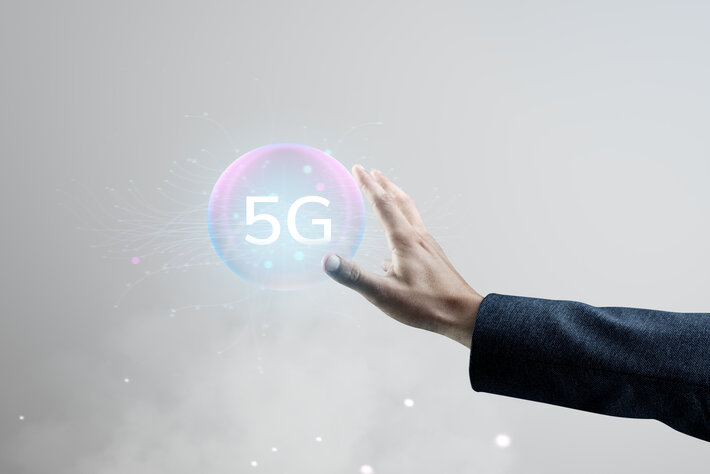The Ever-growing Internet of Things (IoT)
Internet of Things refers to the ever-growing network of physical objects that features for internet connectivity, and the communication that occurs between these objects and other Internet-enabled devices and systems.
When it comes to IoT, many people think mostly about consumer devices like smart phones, smart watches or maybe even smart home. But most future business will be in the Industrial IoT (IIoT), beginning with more sensors everywhere in factories, assembly lines, cars, etc.
Rapid Proliferation of Connected Devices
According to Gartner, over 6.4 billion IoT devices were connected in 2016. As we move further into 2018, we will see more rapid proliferation of connected devices. Industrial internet of things market is expected to expand at a whopping 23.7% CAGR between 2017 and 2025, for the market to reach a valuation of US$783,881.1 million by 2025. Manufacturing is expected to lead the market with a share of close to 35% of the overall market during the forecast period. This is mainly because of high adoption of IIoT in the manufacturing sector. Healthcare is predicted to clock the leading CAGR over the forecast period ending in 2025.
Big Data Analytics for IoT
With numerous devices and sensors relentlessly generating data, how to collect, analyze, enrich and optimize this data has become the focus developers keep an eye on. This data can be fed into IoT analytic algorithms to deliver insights into businesses’ target audiences. In doing so, more detailed patterns and data monetization business models may emerge for organizations to reap the benefits of the data that’s been created.
Challenges of IoT Application Development
As IoT holds significant promise for delivering benefits to emerging and developing economies, it is also presenting challenges when implementing IoT.
The development of IoT applications is very different from classical application development with Java, .NET or Python. Development with devices, and other small edge hardware like street lights, completely changes development experiences. Successful implementations require detailed, customized plans and an integrated, scalable infrastructure, including sensors, a robust network, vast storage, analytics software and more.
Resource-constrained devices
The embedded computing devices deployed within the Internet of Things are expected to be resource constrained. This resource constraint not only applies to memory and processing capabilities, but the low-power radio standards utilized further constrain the network interfaces. The development on device constraints should be carefully look after. The device architecture framework is the critical choice.
Connectivity
Connecting billions of things is the basis for IoT development. Therefore, a stable, low cost and low power consumption technology is preferred, at the mean time the application developers have to consider a mainstream technology which can sustain their business at coming 5-10 years.
Frameworks and standards
To address the highly diverse IoT environment and the related security challenges, great IoT standards and frameworks are available for IoT development, such as MQTT, CoAP, OPC US, Apache Kafka, and many more. All these options use different abstraction levels, have different functionality, operation complexity, and other trade-offs. However, there is not one single standard.
Often, it is too expensive or complex to make existing devices ready for Internet communication. Not every machine can use WiFi, Bluetooth, ZigBee, or another “IoT technology”.
Security
Another key challenge with IoT is security. Adding so many new systems to networks puts additional pressure on IT departments that are already struggling to keep their systems secure. As more organizations adopt IoT solutions, they need to ensure they’re not creating new ways for cyber-attackers to get in.
Be a Digital Service Enabler in an IoT Ecosystem
IoT Platforms are the key for the building and development of an IoT ecosystem. Platforms can provide tremendous value by linking the IoT endpoints to the applications and analytics needed to generate business outcomes. There are more than 300 IoT platforms in the market today and the number is still growing.
For ZTEsoft, we are aiming to become an end-to-end digital service enabler to diverse IoT industrial ecosystems with partners and developers. We founded China Lora Application Alliance (CLAA) and have joined Global IoT Alliance (GIA) to cooperate with partners in IoT ecosystems, and to implement pre-integrated devices and applications in open laboratory.
Combined with rich experience and understanding in telecom industry, ZTEsoft starts to support CSPs to build capabilities beyond their traditional connectivity skill sets, to acquire technical capabilities in security, data analytics and professional IoT operational technology services, etc. with providing an end to-end IoT platform solution, including connectivity platform, device management platform, application enablement platform, and also some applications and devices vertical.
Currently, ZTEsoft IoT platform is compliant with the oneM2M standard. It supports security, analytics and perception, data visualization, service creation and execution environment, etc. And this platform provides SDKs and APIs by plug mode at the southbound/ northbound interfaces for partners to develop gateways for communications between the platform, devices and IoT applications. ZTEsoft IoT platform has been covering the smart living, smart city, intelligent industry and other fields.
 Digital Transformation (DT) is forging new digital economy across the globe. #ZTEsoftDTinAction provides a full angle of view to explain how ZTEsoft executes its strategy to help CSPs’ digital transformation, covering every aspect of Digital Platform approach, Agile IT & ops, Internet of Things (IoT), Analytics and Cloud Native infrastructure. Follow ZTEsoft on Twitter/Facebook/Linkedin for more updates.
Digital Transformation (DT) is forging new digital economy across the globe. #ZTEsoftDTinAction provides a full angle of view to explain how ZTEsoft executes its strategy to help CSPs’ digital transformation, covering every aspect of Digital Platform approach, Agile IT & ops, Internet of Things (IoT), Analytics and Cloud Native infrastructure. Follow ZTEsoft on Twitter/Facebook/Linkedin for more updates.






